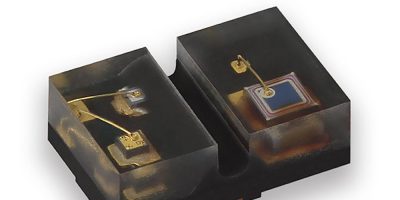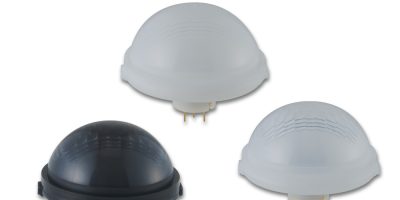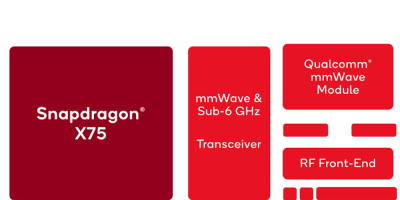The Digi XBee 3 Global GNSS LTE CAT 1 development kit can help engineers accelerate time to market and quickly integrate LTE cellular into devices and applications, eliminating the FCC and carrier end device certification process.
The kit is available from Mouser Electronics and includes the Digi XBee 3 Global LTE Cat 1 embedded modem and is pre-loaded with three months of pre-activiated cellular data service. The modem provides the flexibility to switch between multiple frequencies and wireless protocols as needed. These pre-certified Global LTE Cat 1 modules are suitable for moderate bandwidth (typically less than 25Mbyte per month) and low cost IoT applications, advised the company.
Pairing Digi Remote Manager with the XBee 3 Global LTE Cat 1 modem allows users to configure and control the modem from a central platform. The built-in Digi TrustFence security, identity, and data privacy features use multiple control layers to protect against new and evolving cyber threats.
Onboard templates can prototype cellular integration while the full suite of standard Digi XBee API frames and AT commands, MicroPython, and Digi XCTU allows users to seamlessly transition to this embedded modem with only minor software adjustments, said Mouser. Standard XBee API frames and AT commands, MicroPython, and XCTU simplify setup, configuration, testing and adding or changing functionality.
Smart Cities
VCSEL-based reflective optical sensor saves space
The VCNT2030 reflective optical sensor by Vishay Semiconductors, is offered in a compact surface mount package measuring just 1.85 x 1.2 x 0.6mm.
The sensor is suitable for industrial, computer, consumer, and mobility applications. They save space, compared to previous generation sensor and deliver a higher current transfer ratio (CTR), increased sensing distance and lower power consumption, said the company.
The Vishay Semiconductors VCNT2030 features a VCSEL (vertical cavity surface emitting laser) and a silicon phototransistor in the miniature package. It is compact in construction with the emitting light source and detector arranged in the same plane. It also offers excellent internal crosstalk suppression due to the VCSEL’s narrow ±17 degree emission angle, which also enables improved proximity performance behind cover glass. The VCNT2030’s analogue output signal at the phototransistor is dependent on the amount of light emitted by the VCSEL and reflected off an object in the sensor’s field of view. The device offers a sensing distance of 15mm, which is three times higher than the closest competing device on the market, claimed Vishay.
The compact footprint saves at least 40 per cent of PCB space compared to previous generation devices, said Vishay. As a result, the sensor saves space in optical switching applications in industrial infrastructure, home and building controls, notebook and desktop computers, home appliances, consumer electronics and metering applications. It can also be used in optical encoding for motor control in e-bikes, golf carts, tractors, and harvesters, as well as detecting paper presence in printers and scanners. In these applications the low 8mA driving current of the device’s VCSEL is sufficient to achieve the same performance as solutions using 20mA infrared emitters, which lowers power consumption.
The sensor offers a detection range of 0.3 to 6.0mm, an emitter wavelength of 940nm and a typical output current of 2.5mA, which represents a typical CTR of 31 per cent under test conditions. This value is more than 100 per cent higher than previous generation solutions and the closest competing sensor, said Vishay.
The VCNT2030 features a Moisture Sensitivity Level (MSL) of 3 for reflow soldering according to J-STD-020. It is RoHS-compliant and halogen-free.
Samples and production quantities of the VCNT2030 are available now, with lead times of eight to 16 weeks.
PIR motion sensors have wide and long detection ranges
PaPIRs are compact, long range, passive infra red motion sensors by Panasonic Industry. They are designed to ease the use of motion sensing in street lighting and aisle applications.
According to Panasonic Industry they are the world’s most compact long range PIR motion sensors and now include the Ultra Wide and the Long Distance Detection type which is able to be installed at heights up to 15 metres and with a maximum field of view of 91.6 x 45.4 degrees. These capabilities set new standards in terms of lens size, detection area and integration options, said Panasonic.
The small size possible with PIR technology contributes to the miniaturisation of motion detectors and the pyroelectric sensor elements are extremely sensitive explained the company. The lens diameter is only 32.6mm yet with a detection area of 30.9 x 12.6 meters at an installation height of 15 meters, the new Ultra Wide and Long Distance Detection Type can be used in high ceiling installations.
The configuration of the 188 detection zones enables detection of radial movement and minimises blind spots, added Panasonic. By precisely identifying human presence, the sensor provides accurate data for lighting control, resulting in not just optimal illumination but also significant energy savings.
The motion sensor is also easy to install and integrate into existing lighting systems, claimed Panasonic Industry. the design features both digital (open-drain output) and analogue (op amp output) interfaces. It also supports seamless integration with various lighting control protocols. The robust and UV-stabilised lens makes the sensor suitable for both indoor and outdoor environments.
Panasonic Industry Europe is part of the global Panasonic Industry organisation, one of the five major operating companies within Panasonic Holding. Panasonic Industry Europe provides products and services for industrial customers all over Europe.
Panasonic Industry Europe serves customers in a broad range of industrial sectors such as mobility, infrastructure, automation, medical, appliances, smart living and security. Its broad and diverse product portfolio encompasses key electronic component sectors including electromechanical and passive components, batteries and other energy products, sensors and wireless connectivity modules, thermal management materials and custom solutions, as well as automation devices and solutions.
Qualcomm claims world record with Snapdragon X75 5G downlink
The Snapdragon X75 has achieved a downlink rate of 7.5Gbits per second, the world’s fastest 5G speed record with sub-6GHz spectrum, said Qualcomm.
The sixth generation modem-RF system’s advanced 5G capabilities of 4x carrier aggregation (CA) on TDD bands and 1024 quadrature amplitude modulation (QAM) enable the high downlink speeds in sub-6GHz with a 5G standalone network configuration.
Aggregation of four TDD channels enables operators to combine diverse spectrum assets to achieve higher data rates, advised Qualcomm. In addition, 1024 QAM improves spectral efficiency by incorporating more data into each transmission, compared to 256 QAM systems, which allows for increased data throughput and improved spectrum efficiency.
“Snapdragon X75 5G Modem-RF System is the smartest wireless modem we have ever created and is designed for the future, with a 5G Advanced ready architecture, made to help operators define the next generation of networks around the world,” said Sunil Patil, vice president product management, Qualcomm Technologies. It has applications for connectivity across many industry sectors, including consumer, enterprise and industrial use cases, he added.
Snapdragon X75 is currently sampling to customers. Commercial devices are expected to launch in the second half of this year.
The Snapdragon platforms from Qualcomm and the company’s technology roadmap allows it to efficiently scale the technologies for mobile applications, including advanced connectivity, high performance, low power compute, on device intelligence, to the next generation of connected smart devices across industries. Innovations will help enable cloud-edge convergence, transform industries, accelerate the digital economy, the company believes.
About Smart Cities
This news story is brought to you by smartcitieselectronics.com, the specialist site dedicated to delivering information about what’s new in the Smart City Electronics industry, with daily news updates, new products and industry news. To stay up-to-date, register to receive our weekly newsletters and keep yourself informed on the latest technology news and new products from around the globe. Simply click this link to register here: Smart Cities Registration







